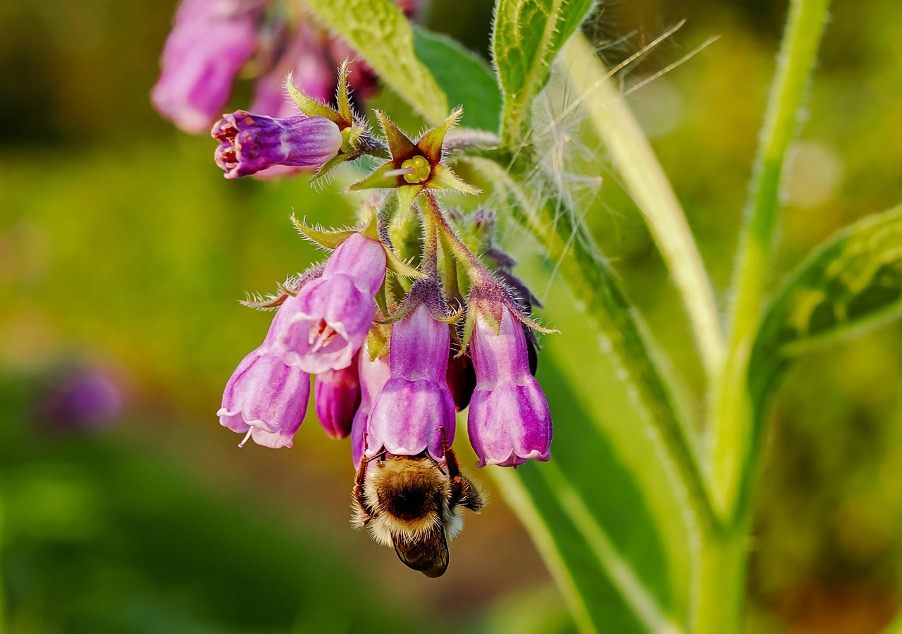
How to Make Comfrey Fertilizer: A Guide
Comfrey liquid manure is a great way to provide your plants with additional nutrients alongside nettle liquid manure and other plant liquids. In addition to nitrogen, comfrey provides your plants with potassium and phosphorus in particular, which benefits their growth. You can find out how to make and use comfrey liquid manure in this article.
This Article Contains:
- Plant Manure as an Organic Fertilizer for Your Vegetables
- Comfrey Plants as Nitrogen Fertilizer
- Prepare Comfrey Liquid Manure: This Is How It Works
- Comfrey Liquid Fertilizer: Effects & Application
- Calcium & Potassium Fertilizer for Tomatoes
- Fertilizer for Cucumbers, Potatoes & Other Heavy Feeders
- Frequently Asked Questions About Making Comfrey Liquid Manure
Quick Overview
Make & Use Comfrey Liquid Manure
- Put 1 kg/2.2 pd of chopped leaves and stems of comfrey (possibly also marigolds, nettle & rock flour) in a large bucket (not metal) and fill with 10 L/21 pt of rainwater.
- Cover with a lid or cloth and stir with a stick every 1 - 2 days.
- As soon as the slurry no longer foams when stirred, it is ready (takes between 1 - 3 weeks).
- Water your plants from below with diluted liquid manure every 1 - 3 weeks.
- Especially heavy feeders such as tomatoes, cucumbers, pumpkins and potatoes are happy about the fertilizer.
Effect and Use of Comfrey in the Garden
- Supplies your plants with nutrients.
- Contributes to humus formation & healthy soil through microorganisms in the slurry.
- Protects your plants against pests (spider mites, aphids & mildew) by spraying, as the leaf structure is strengthened by silicic acid & silicon.
Plant Manure as an Organic Fertilizer for Your Vegetables
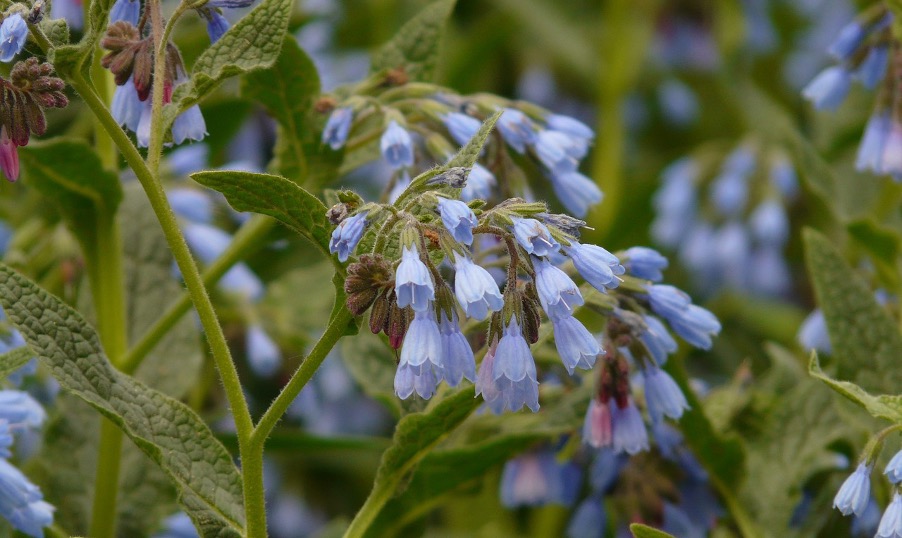
Plant dips are natural fertilizers that you can easily make yourself from plants in your garden. They provide your vegetables with additional nutrients quickly. You also contribute to a healthy nutrient cycle. The nutrients extracted from the soil by plants such as nettles and comfrey are returned to the soil and your plants. In addition to nutrients, plant dips also contain many effective microorganisms (through the fermentation process) that contribute to soil improvement (decomposition and conversion processes, humus formation, improvement of the soil structure). You also save money, as these natural fertilizers cost you nothing apart from a little water and effort. You can find out more about natural fertilization in the article on Natural and Organic Fertilization.

Want to Learn From Others?
To exchange ideas with other gardeners and benefit from their experiences, you can visit our Fryd-Community. Perhaps someone has already made their own comfrey liquid manure and can give you some tips.
Join Community NowComfrey Plants as Nitrogen Fertilizer
In addition to their use as medicinal plants and ground cover (in Permaculture, e.g. under tree slices), comfrey plants, just like nettles, bind a lot of nitrogen from the soil. Comfrey manure is therefore an excellent nitrogen fertilizer for your plants. In addition to nitrogen, comfrey also contains relevant amounts of potassium, calcium, phosphorus, trace elements, silicic acid and tannins.
If you don't already have comfrey in your garden, you can sow and plant it as a ground cover or bee-friendly plant in your garden. You can find out what you should bear in mind in our article on Sowing, Planting and Harvesting Comfrey Otherwise, you can also often find comfrey along streams and at the edges of paths and woodland.
To have enough comfrey available for the fall or next year, you can dry comfrey, nettles and the like. You can then simply make slurry with the dried plant parts as soon as you need a fertilizer for your plants.
Prepare Comfrey Liquid Manure: This Is How It Works
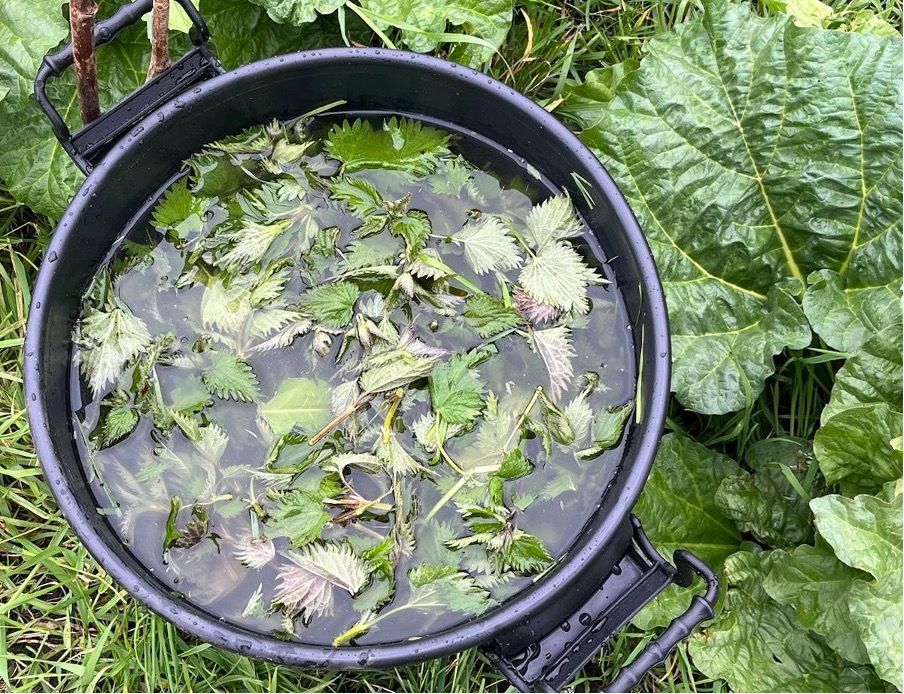
The stems and leaves of comfrey contain the most nutrients, which is why they are best suited for making slurry. Comfrey (Symphytum officinale), comfrey (Symphytum peregrinum) and Caucasian comfrey (Symphytum asperum) are all suitable for making a plant slurry.
You need 1 kg/2.2 pd of comfrey to make about 10 L/21 pt of liquid manure. To do this, you should chop up the stems and leaves a little so that they decompose well and start to ferment. You can also add nettles and marigolds to the container. They contain additional nutrients that your plants will enjoy. Rock Flour is also a popular addition, as it binds the strong odor during fermentation.
It is best to use a large bucket to make your comfrey fertilizer. Do not use metal objects as containers or for stirring, as the slurry becomes highly acidic during the fermentation process. This can corrode the metal and release unwanted metal ions that can be harmful to the environment. Once you have filled the bucket with the comfrey leaves and stems and an appropriate amount of water (preferably rainwater, tap water is less suitable), cover it with a cloth or lid. This prevents insects from accidentally falling into the liquid manure and drowning. However, your container must never be sealed airtight, as gases are released during the fermentation process and need to escape. Stir the slurry every 1 - 2 days. It will take between 1 - 3 weeks until fermentation is complete and your comfrey slurry is ready. You can tell that the slurry is ready for straining by the fact that no more foam forms when you stir it.
Comfrey Liquid Fertilizer: Effects & Application
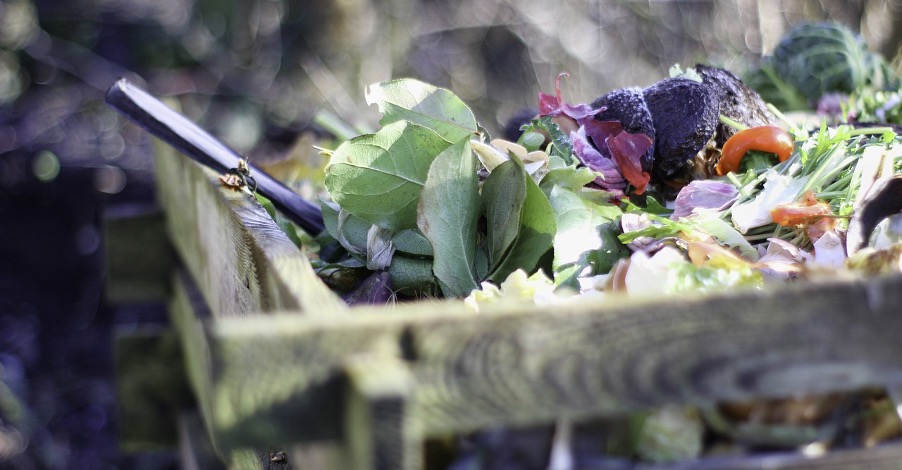
Plant dips not only provide your plants with nutrients, they also help them to become more resistant to pests and diseases. Above all, the nutrients and microorganisms contribute to the formation of humus and thus to healthy soil. Water your plants from below, as the liquid manure is too concentrated for leaves and will otherwise damage them due to the acidity. However, certain plant liquids are used specifically against pests by spraying the leaves of your plants with diluted plant liquid. In the case of comfrey and nettle, the liquid manure is diluted by a factor of 1:20 if you want to spray the leaves with it. The silicic acid and silicon contained in the liquid manure strengthen the leaf structure, giving the leaves a firmer surface. This protects against bacterial diseases and sucking insects in particular, but less so against viruses. Comfrey manure, for example, strengthens resistance to spider mites, aphids and mildew. You can find out more about this topic in our article on Naturally Strengthening Plants Without Chemicals.
Calcium & Potassium Fertilizer for Tomatoes
Tomatoes need a lot of potassium and calcium for their development. Especially in this combination with potassium and calcium, and as a fertilizer for the soil, as well as for spraying leaves, comfrey liquid manure is very suitable for tomatoes. It strengthens the fruit and prevents fruit rot and other fungal diseases. As tomatoes need a lot of nutrients, you can water them once a week with the plant liquid manure. They will appreciate the additional nutrients that comfrey provides. By fertilizing with liquid manure, you also avoid over-fertilization, which happens more quickly with conventional fertilizers.
Tip: If you add marigolds to the liquid manure as well as comfrey, you will also increase the potassium content of your plant liquid manure.
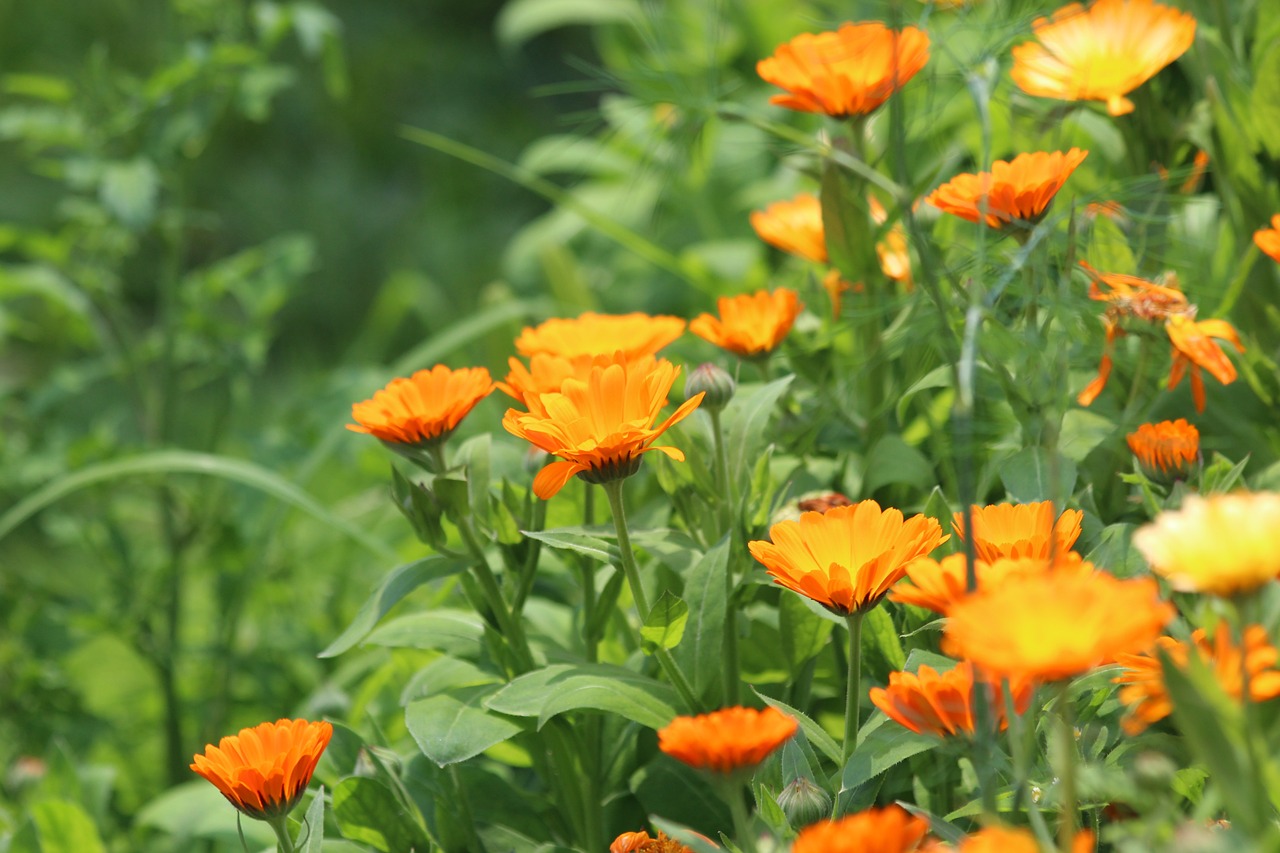
Fertilizer for Cucumbers, Potatoes & Other Heavy Feeders
In addition to tomatoes, comfrey liquid manure is particularly suitable as a fertilizer for heavy feeders such as eggplants, cucumbers, pumpkins, potatoes, peppers, celery and zucchinis. But berry bushes, lovage, fruit trees, roses and sunflowers are also happy to receive such fertilizers. You can water your plants with the liquid manure every 1 - 3 weeks as required. Instead of a slurry, you can also bury the leaves of comfrey in the soil next to the roots of your plants or mulch them with it. This will release the nutrients to your plants more slowly, but continuously over a longer period of time.
Produce Your Own Phosphorus Fertilizer
Comfrey manure also contains plenty of phosphorus, which is important for the formation of flowers and fruit. Plants that have a high phosphorus requirement, such as lemons, mint and hydrangeas, benefit from a dose of comfrey fertilizer.
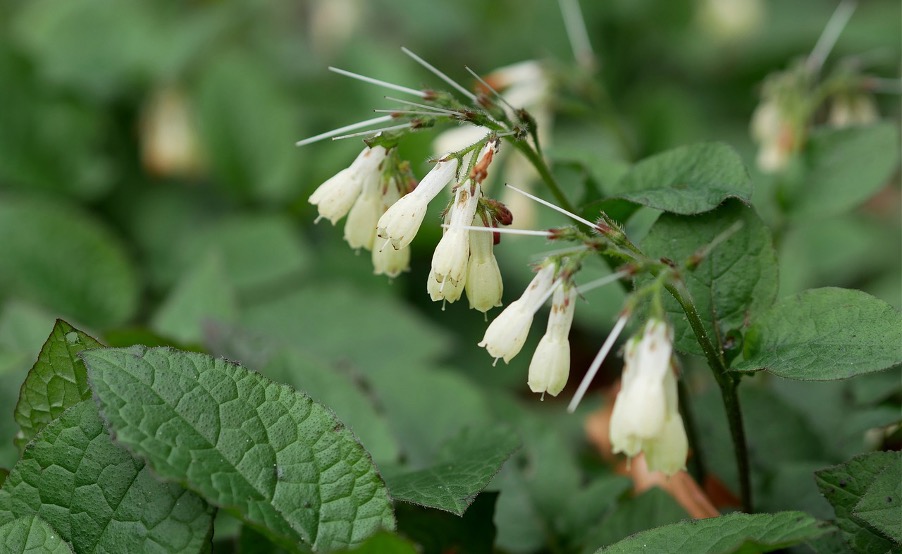
If you have any questions or comments, please write to us at magazin@fryd.app. Would you like to receive helpful gardening tips all year round and plan your own beds optimally? Then register here or download the Fryd app for Android or iOS.
Fryd - your digital bed planner
Cover picture by Couleur on Pixabay.
Marielena
Current Topics in the Community

#red , #tuesday
Show 1 answer
Liked 2 times
#testpostcount

Dec 2025
Popular Articles

Companion Plants for Carrots: What (Not) to Plant With Carrots

Companion Plants for Celery : What (Not) to Plant With Celery?

Strawberry Types: List of Best Strawberry Varieties

Companion Planting With Strawberries: Companion Plants and Planting Plan

Basil Varieties & Types at a Glance

What to Plant With Cabbage: Good and Bad Companion Plants

Fertilizing Strawberries: Home Remedies & Natural Fertilizers at a Glance

Growing Sweet Potatoes: Tips on Cultivation & Companion Plants

Companion Plants for Kitchen Herbs: Chives, Parsley & Co

What Herbs Can Be Planted Together?
FAQ
How do you make comfrey liquid manure?
You need about 1 kg/2.2 pd of stems and leaves, which you mix with about 10 L/21 pt of rainwater in a bucket (not metal). It is best to stir the slurry every 1-2 days. It is ready as soon as no more foam forms (approx. 1-3 weeks).
For which plants is comfrey manure suitable?
Before use, you should dilute the liquid manure with water (1:10). It is suitable as a fertilizer for heavy growers such as cucumbers, potatoes, cabbage, pumpkin, tomatoes, but also for berry bushes, fruit trees, sunflowers, roses and lovage.
How often should you fertilize your plants with comfrey manure?
You can fertilize your plants with the slurry every 1-3 weeks as required. Tomatoes particularly benefit from a weekly application. However, make sure to dilute the comfrey liquid manure with water at a ratio of 1:10 beforehand.
What is the shelf life of comfrey manure?
You can provide your plants with additional nutrients for a whole season with prepared comfrey manure. Next year, however, you should prepare a new slurry, for which you can also dry the leaves and stems.